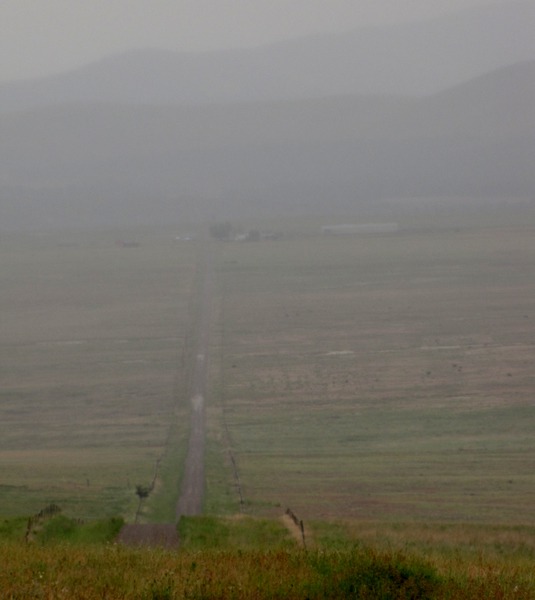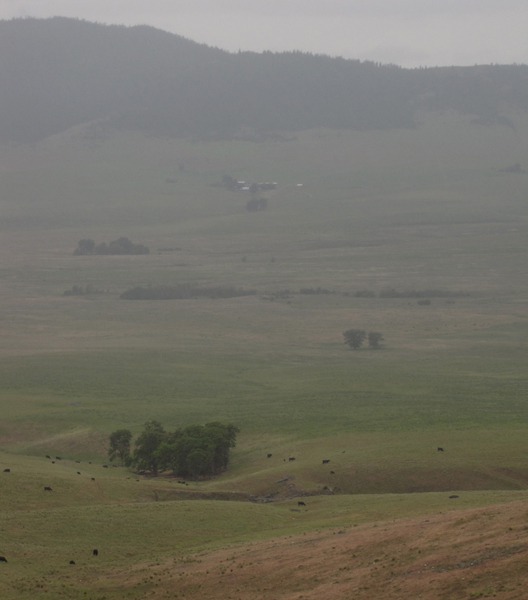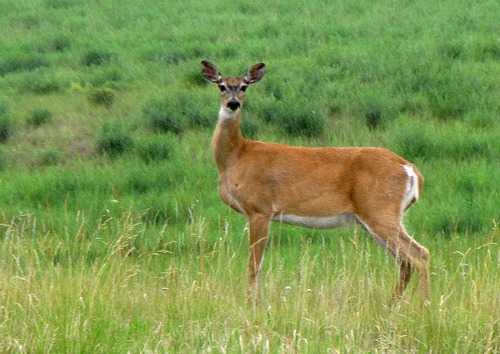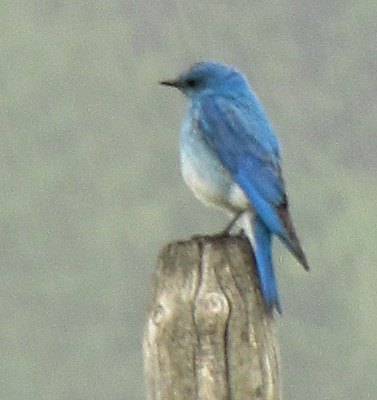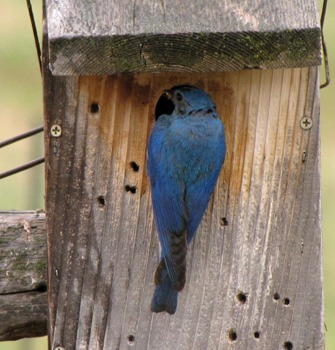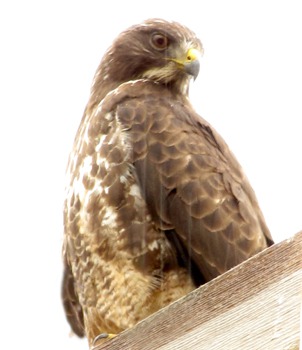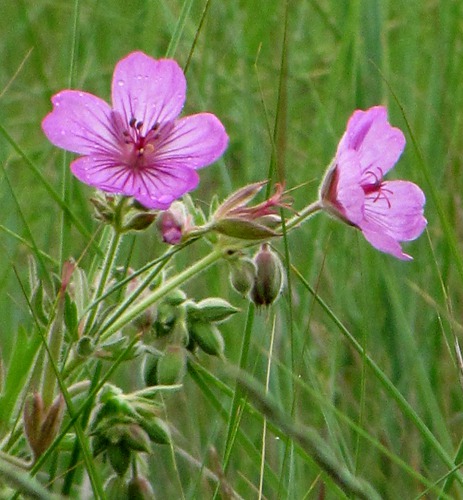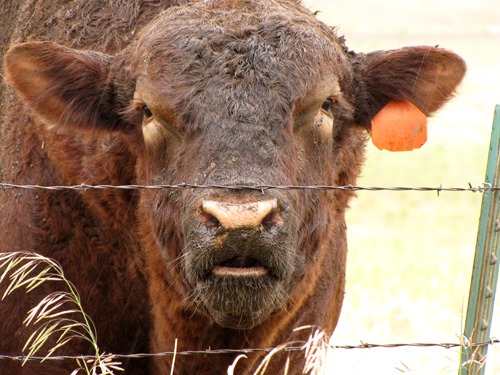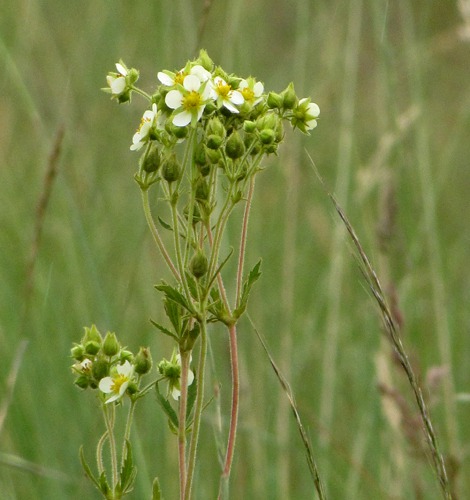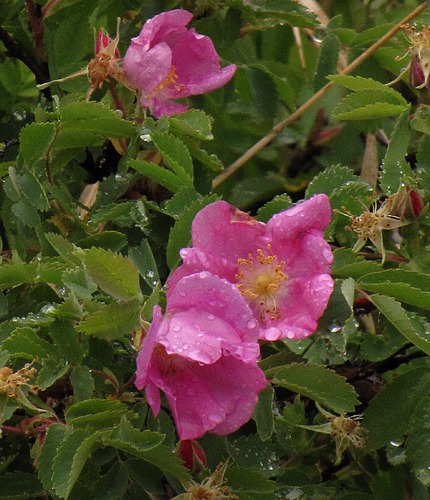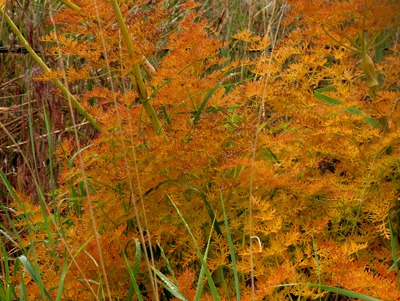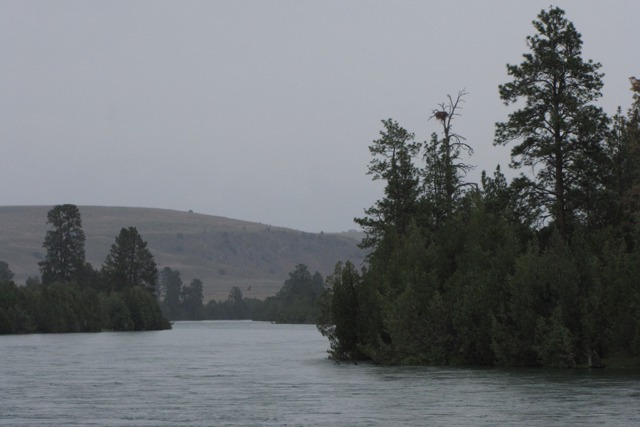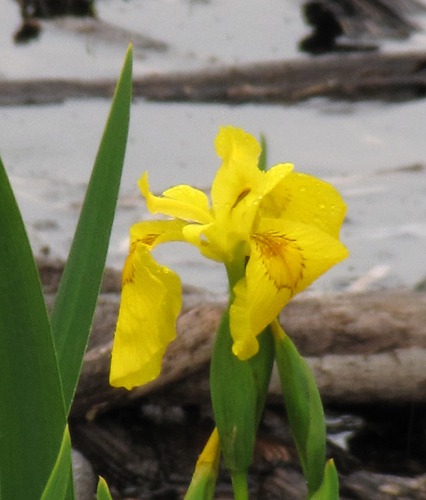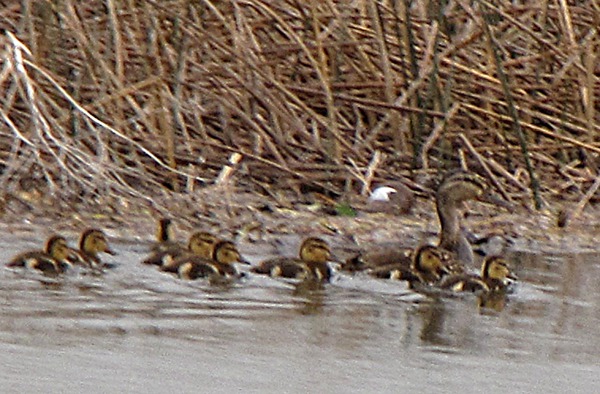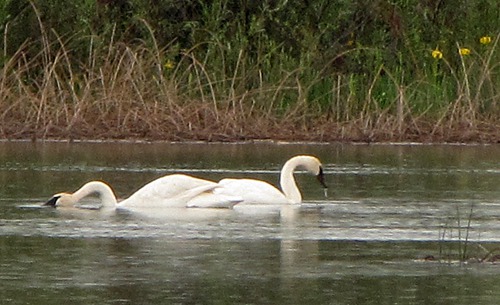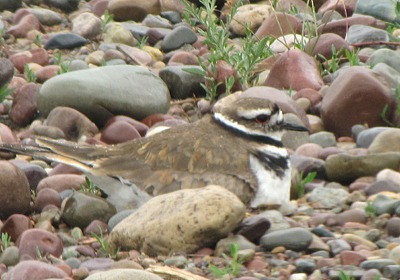National wildlife Refuge Tour in Northwestern MT, by Louise: 19 Jun 2008. Today we took a tour of wildlife refuges close to Kalispell MT. The weather was cool with misty rain so we left Leesha behind at our friends' cabin in Lakeside MT.
We headed south along the west shore of Flathead Lake on US HWY 93. And as soon as possible, we turned off the highway onto Walking Horse Lane, a good gravel road that wound through the lush green hills and connected with Buffalo Bridge Road.
Very soon, we encountered a wary white-tail deer doe in a lush field. We took that as a good omen for game-spotting ahead.
Mountain bluebirds banked through the sky, flashing that beautiful turquoise blue.
A short-eared owl regarded us solemnly from a fence post, posing for a portrait by Brian.
Red-tail hawks and Rough-legged hawks patrolled the skies, occasionally plummeting to earth for a meal.
The pink sticky geraniums added flashes of color to the misty green.
Amid the flowers, a very big, aggressive and beefy beefalo voiced his displeasure with the big Angus bull on the other side of the road. They bellowed back and forth while the bluebirds ignored them, and we hastened on.
At the Buffalo Bridge we stopped to admire the volume of water in the Flathead River and to speculate on a possible canoe trip. Ah well, someday!
Pablo National Wildlife Refuge: A combination of gravel roads led us east to Pablo National Wildlife Refuge, just two miles south of Polson. The refuge is 2,542 acres and was established in 1921 as a refuge and breeding ground for native birds.
From the website: The rolling grassland terrain is interspersed with numerous pothole wetlands which often contain water throughout the year. The Refuge includes a 1,850 acres reservoir. The BIA Flathead Irrigation Project manages the reservoir for irrigation and flood control. The Refuge also includes uplands, cottonwoods, and willows.
There's an active bald eagle nest which fledges young most years. In 1996, a release of 19 trumpeter swans was conducted by the Confederated Salish and Kootenai Tribes, in coordination with MT Dept. Fish, Wildlife & Parks and the U.S. Fish & Wildlife Service, to help establish a breeding flock in the valley.
Common mammals include muskrat, striped skunk, mink, badgers, field mice, meadow voles and porcupines. Sport fish include yellow perch and largemouth bass.
The Refuge is operated by the Fish and Wildlife Service under agreement with the Bureau of Indian Affairs - Flathead Irrigation Project and the Confederated Salish and Kootenai Tribes.
We spotted a pair of trumpeter swans across the lake! What a treat. We spotted pheasants, mourning doves, western and eastern kingbirds, and yellow-headed blackbirds. A killdeer had laid two eggs in the rocks in the middle of one of the gravel roads near the lake. She kept trying to lure us away by pretending to have a broken wing.
The Refuge waters were heavily littered with plastic and metal bottles and cans. If you live in the area, maybe you could volunteer to help with a badly needed clean-up.
Ninepipe National Wildlife Refuge: And on to the next Refuge, Ninepipe National Wildlife Refuge, about five miles south of Ronan. From the website: Established at the same time as Pablo NWR, Ninepipe NWR is 2,062 acres of rolling grassland habitat interspersed with numerous pothole wetlands which often contain water throughout the year. This Refuge also includes a reservoir of 1,672 acres.
As we drove around the west edge of the Refuge, we spotted a great blue heron in the adjacent corn field. A corn field? Suddenly he speared his long bill down into the dried winter stalks and came up with a struggling vole, which he promptly swallowed. A fierce hunter indeed!
We spotted Western grebes, Canada geese, an osprey nest and one of the resident ospreys, cinnamon teal, and double crested cormorants. No hunting is allowed on either of these refuges in order to encourage the birds to nest and use the refuge as a sanctuary as long as possible each season.
This Refuge could also use some loving care to remove trash and clean up facilities such as the restrooms.
National Bison Range: We weren't done yet! We headed south on US HWY 93 and then west and then south on MT HWY 212 to the National Bison Range at Moise. From the website: The National Bison Range is administered by the U.S. Fish and Wildlife Service. Established in 1908 to support an American bison population, it is one of the oldest Refuges in the U.S. It is home to about 300-500 bison. Other large wildlife here include elk, white-tail and mule deer, pronghorn antelope, bighorn sheep, and black bear.
The open grasslands and rolling hills provide wonderful photography opportunities, even on misty days.
We headed out on the Red Sleep Mountain Drive, a gravel road with very steep spots and sharp switchbacks. Vehicles over thirty feet long and all trailers are not allowed on this road. Oh, motorcycles and bicycles aren't allowed on any of the gravel roads, either. One recent summer a bison in Custer State Park near Rapid City took it into his head to charge a motorcycle; he lifted the Harley and rider and hurled them off the road and into the meadow.
The beautiful drive took us up and over the ridge looking down in to the Flathead Valley. At the top we hiked out along the open ridge to a bitterroot rock garden -- the lovely little pink flowers that are Montana's state flower scattered along a south-facing rocky slope. Would you believe it's the first time I've ever seen these in the wild?!! The scientific name, Lewisia rediviva, honors Meriwether Lewis of the Lewis and Clark expedition who collected a sample of the plant near Lolo.
We watched mule deer feasting on early blooming goldenpea, and a ground squirrel posed for his portrait. Tall cinquefoil was blooming, too.
The scenic drive then followed the far east edge of the Refuge overlooking the valley and swooped back down to the entrance.
I'm such a plant fanatic; I noticed that much of the Refuge was infested with Dalmatian toadflax, an invasive exotic noxious weed. Actually, I've seen lots of toadflax and other noxious weeds along Montana's highways and byways. It seems to be a real problem for the state.
And then back to our friends' house after an amazing day of exploring this lovely place -- so green and peaceful in the early summer after the snow has melted.
Louise with photos by Brian
Text and Photos copyright GoinMobyle, LLC, 2009


